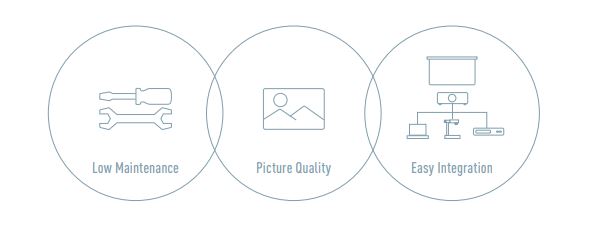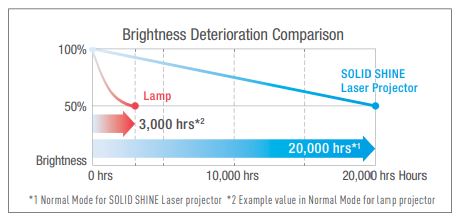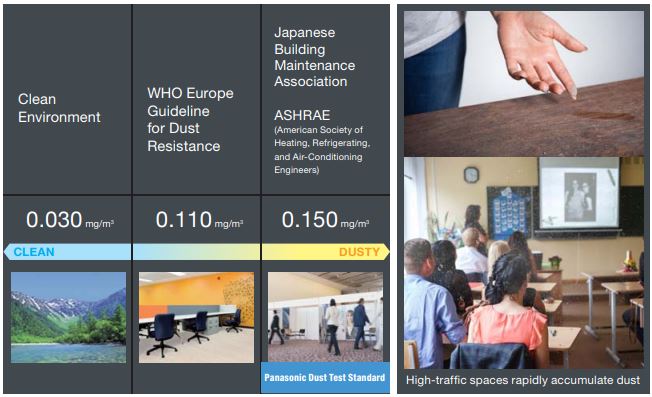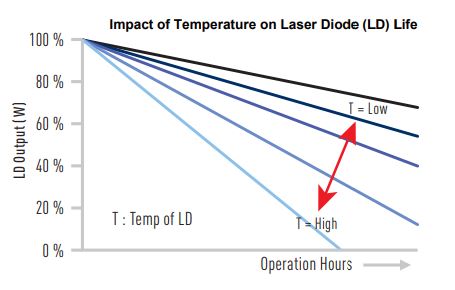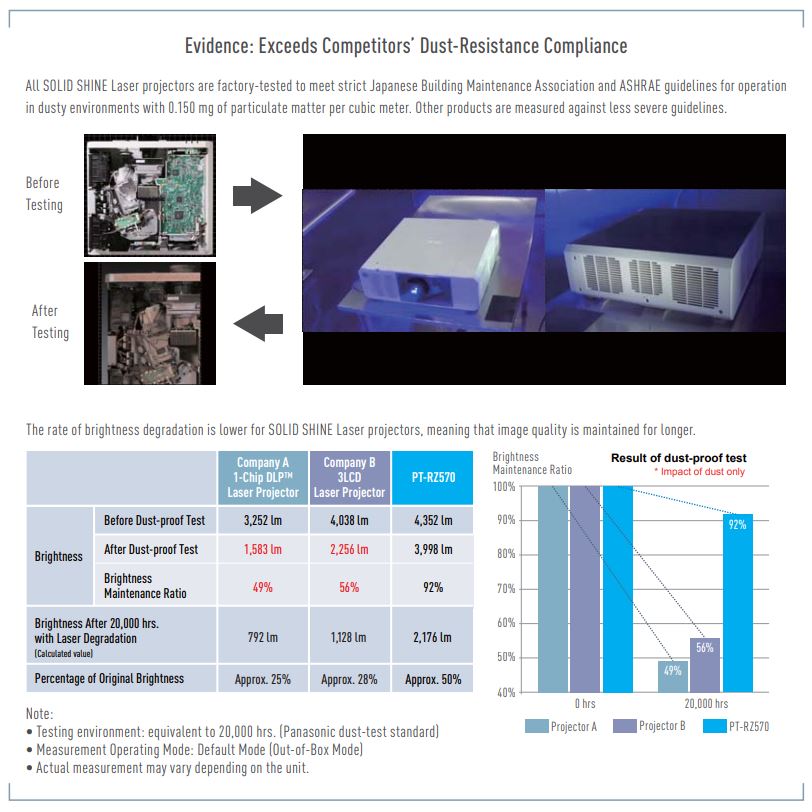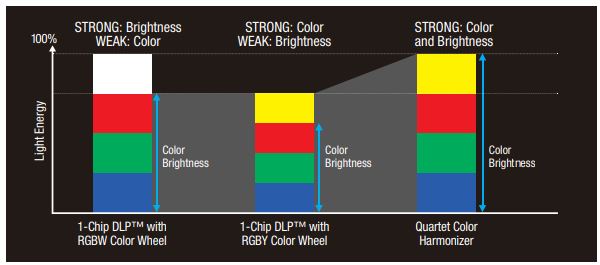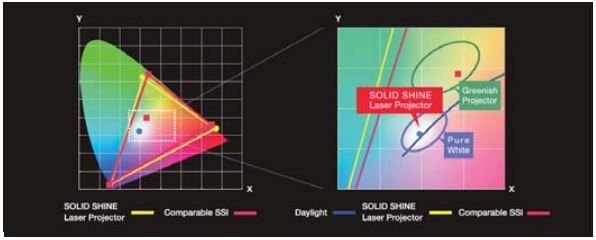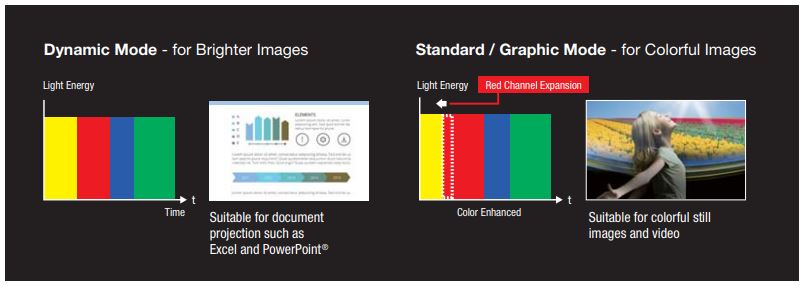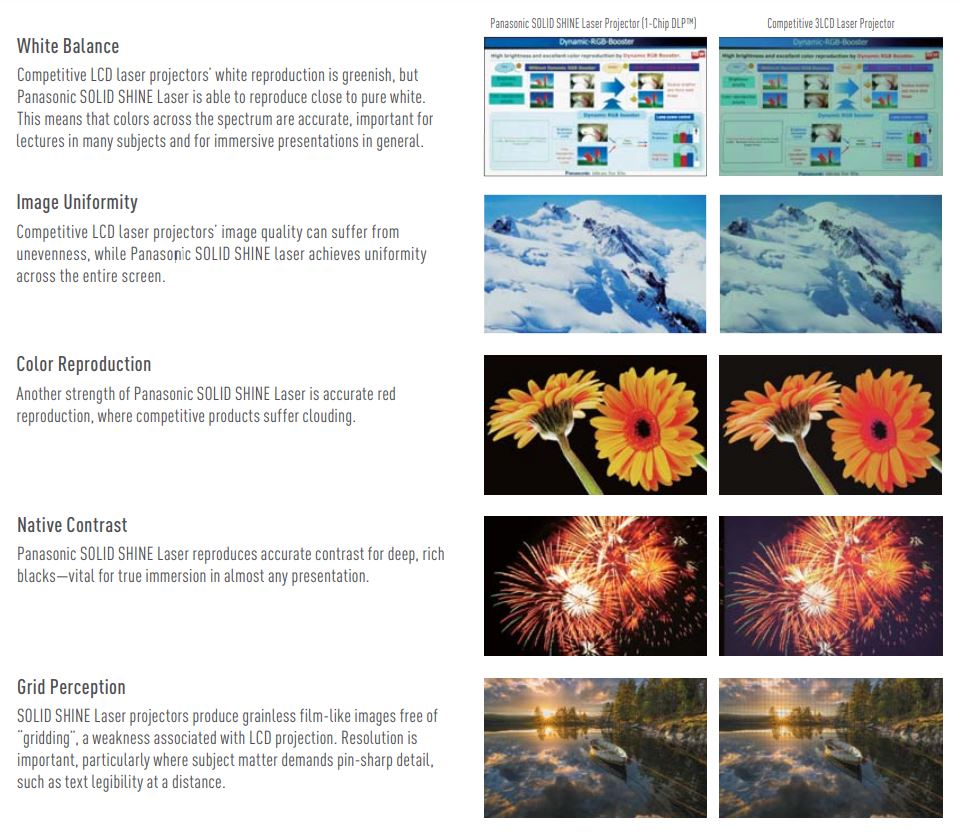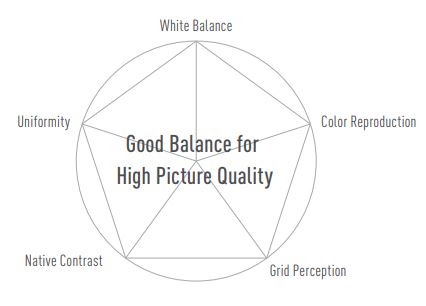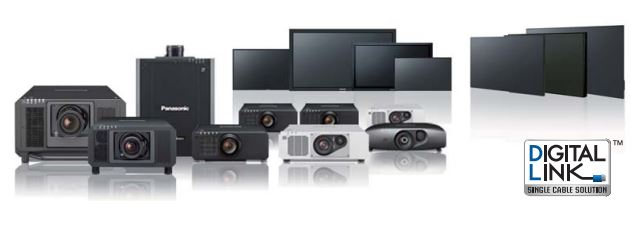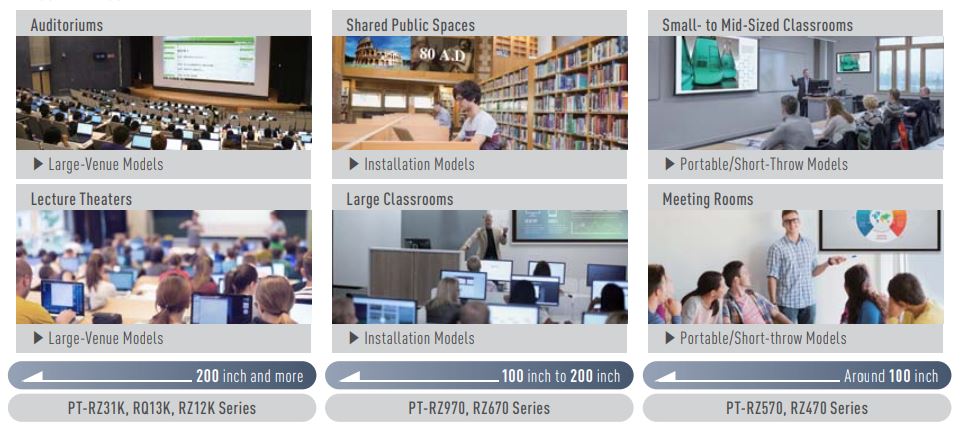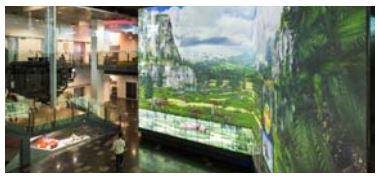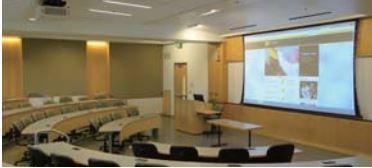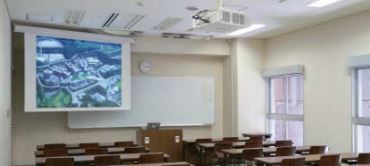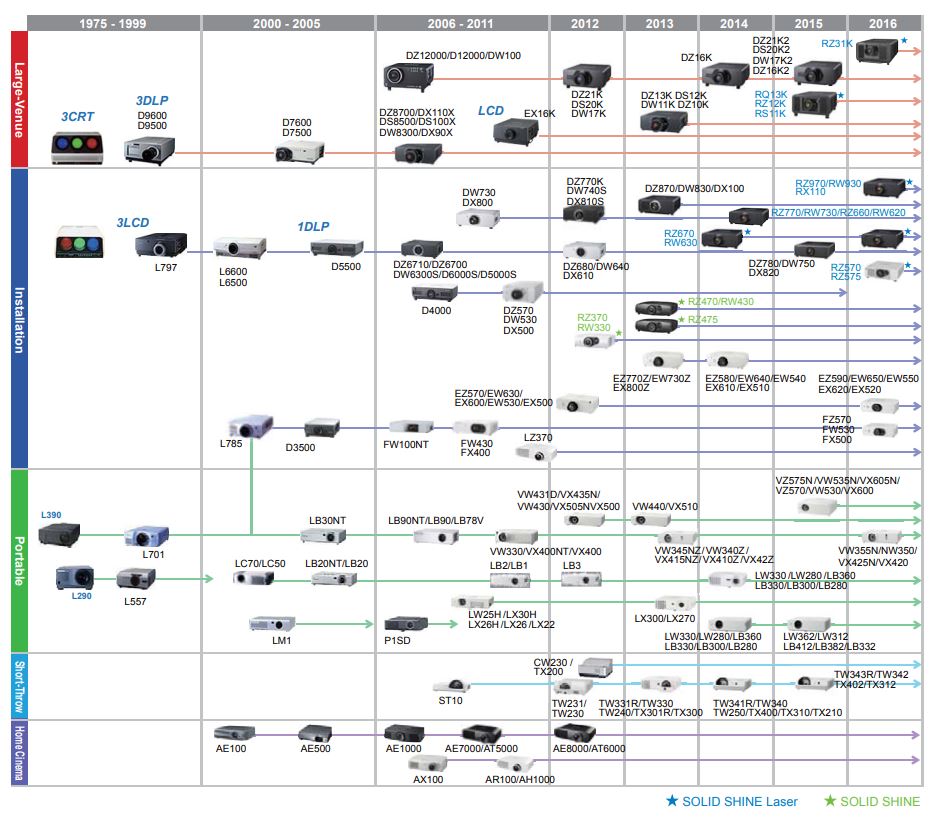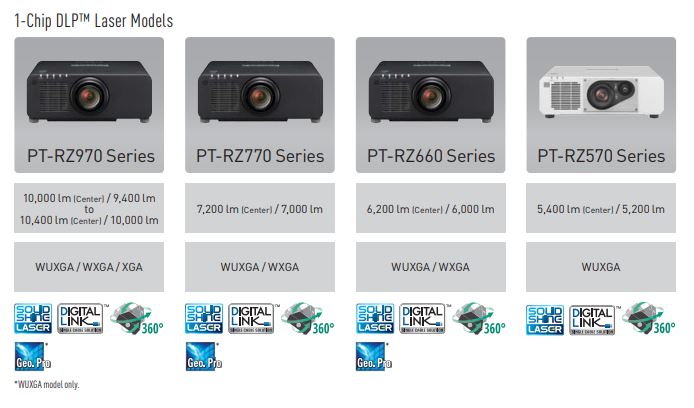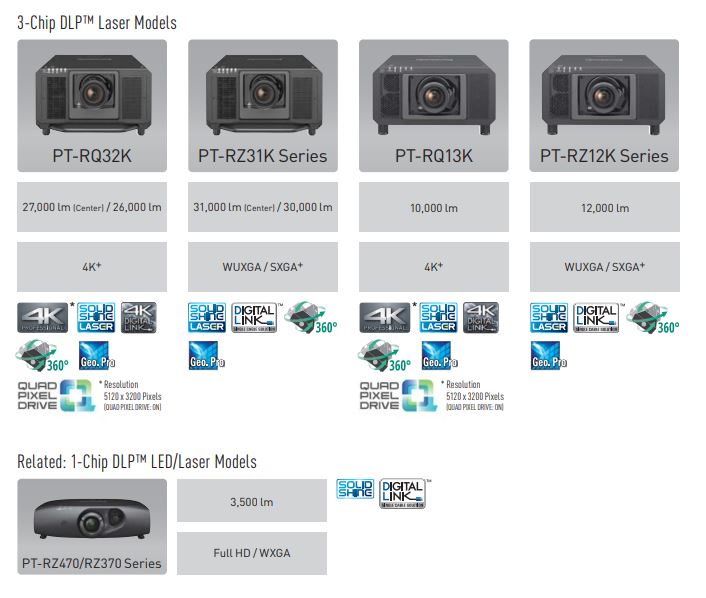September 4, 2018
11 min read
University administrators face a complex choice when renewing AV infrastructure. Many established brands perform admirably in some areas, but very few hit every performance target while providing failsafe reliability at a low cost. Testing against objective benchmarks vs. other brands, this paper shows that Panasonic SOLID SHINE Laser technology is the only solution capable of […]
Read WhitepaperUniversity administrators face a complex choice when renewing AV infrastructure. Many established brands perform admirably in some areas, but very few hit every performance target while providing failsafe reliability at a low cost. Testing against objective benchmarks vs. other brands, this paper shows that Panasonic SOLID SHINE Laser technology is the only solution capable of delivering outstanding performance in every aspect of projection, including:
1. Low Maintenance and TCO
2. High Image Quality
3. Integration Flexibility
The data doesn't lie. Learn how Solid Shine laser technology enables Panasonic to outshine the competition in the classroom.
Outline: Why Update Your Projection System?
Quality Projection is Vital for Effective Learning
It’s never been more important for educators to stay ahead of the technology curve in order to prepare young adults for a changing world. The effectiveness of immersive visual-based learning is proven to increase understanding of complex subjects. It’s central to the education process from K1 through to doctorate-level education.
University administrators face a complex choice when renewing AV infrastructure. Many established brands perform admirably in some areas, but very few hit every performance target while providing fail-safe reliability at low cost.
Our objective is to prove Panasonic SOLID SHINE Laser is the only solution capable of doing just that: delivering outstanding performance in every aspect of projection: (1) low maintenance and TCO, (2) high image quality, and (3) integration flexibility for specialized or general application.
In direct comparisons with competitive products and measured against objective benchmarks, Panasonic shines. For administrators and teachers, these products grant freedom to contribute to a better quality of education.
Consider: What Should a Projector Deliver?
Point 1: Ultra-low Maintenance and Low TCO
The enemies of reliability and image quality are dust, high temperature, and light-source failure. No projector is immortal, and some maintenance is inevitable at some point during its lifespan when used intermittently every day, no matter what manufacturers claim. This is an inconvenient fact of life for teachers, and a strain on the resources of administrators.
Understanding this, Panasonic invested significant human and financial resources over many years to develop high-powered laser projectors that deliver better picture quality than lamp- and laser-based LCD technologies while enabling long maintenance-free service periods. This is achieved by eliminating dust intrusion and consumable parts for round-the-clock on-demand projection. The benefits of low-cost dependability are difficult to overstate.
Point 2: Excellent Picture Quality
A hot, dim room, droning projector, and difficult subject material creates ideal conditions for sleepy students and wasted time. Projectors should serve up bright, vivid, pin-sharp images the whole room can see with the lights on. Both LCD laser and DLP™ technologies can do this, but for the former, there are caveats. Further, projectors should run almost silently and power on and off anytime without waiting for the unit to warm up or cool down.
Point 3: Easy Integration and Flexible Installation
Few universities can afford to renew an entire projector network at the same time, instead replacing individual devices at End of Life. It is therefore vital that incoming projectors can be rigged in any room, talk to other devices within the network, and commence work immediately
Background: What Technologies are Available?
Considerations for Laser, Lamp, LCD, and DLP™ Technology
Most projectors work by beaming light from lamp or laser diodes through LCD panels or DLP™ semiconductor chips (comprising millions of tiny mirrors). Each has advantages and disadvantages depending on variables. Let’s consider these in the context of tertiary education.
Lamp Vs. Laser
Lamp-based projectors are a popular choice for large venues for high brightness, excellent picture quality, and lower initial cost of purchase. However, image quality declines swiftly, and more maintenance is required. Further, projection angles are limited and lamp warm-up/cool-down periods are necessary.
Alternatively, laser projectors use laser diodes that maintain brightness and color for longer. Panasonic has developed laser technology to deliver image quality that is superior to that of lamp-based equivalents. Enabled by filterless designs and airtight optics, no maintenance is required over years of regular use, tipping the balance in laser’s favor for permanent installations in education facilities.
ROI Research: Lifetime Cost of Ownership
Taking into account all costs associated with the purchase and effective operation of a projector for the education sector, Panasonic found a clear advantage for the Panasonic PT-RZ660 compared with a range of lamp-lit projectors:
• Panasonic PT-RZ660 SOLID SHINE Laser Projector: US$8,890
• Lamp-based projectors: US$9,499
Although initial purchase price may be higher, lifetime freedom from maintenance and lamp changes gives the Panasonic PT-RZ660 a Lifetime Cost of Ownership 7% lower than a range of conventional projectors of equivalent brightness.
Calculating Conditions:
• Anticipated operating period is calculated at 8 hours/day for about 7 years
• Including maintenance costs of replacing consumables, cleaning, etc.
LCD Laser Vs. DLP™ Laser
Some laser projectors use red, green, and blue LCD panels to produce images. Advantages include stable color reproduction and high image quality. However, gridding can be easy to distinguish and technical limitations mean LCD can’t reproduce deep blacks for high contrast.
DLP™ projectors use a semiconductor to control light emission by changing mirror angles to compose images. 1-Chip DLP™ uses a single DMD device and color wheel(s), while 3-Chip DLP™ uses three DMDs for RGB color reproduction. DLP™ projectors reproduce deep blacks and a more accurate white balance than LCD projectors.
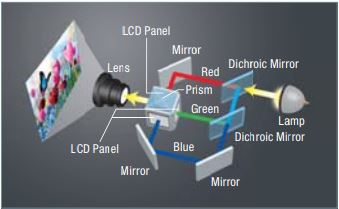
Introduction: The Case for SOLID SHINE Laser
Why Choose SOLID SHINE Laser with DLP™ Imaging?
When weighing role-specific requirements against the pros and cons of different technologies, the argument for a laser drive emerges as most persuasive. Clearly, a projector that can provide better image quality at lower overall cost with less downtime and easier operation is preferable to other alternatives.
However, not all laser projectors are created equal. The following analysis and evidence proves that Panasonic SOLID SHINE Laser with DLP™ imaging outperforms competitive brands on key metrics by virtue of superior design, resulting in less maintenance, lower TCO, excellent image quality, and best-in-class integration into existing audio-video infrastructure.
Key Point: Dust Resistant for 20,000-hour Maintenance-free Operation
Panasonic SOLID SHINE Laser projectors offer up to 20,000 hours of maintenance-free operation for the whole projector thanks to airtight dust-resistant optics and dual-drive phosphor-wheel technology on selected models.
Exceeds Dust Resistance Guidelines Used By Other Brands
Panasonic SOLID SHINE laser projectors are tested against stringent American Society of Heating, Refrigerating, and Air-Conditioning Engineers [ASHRAE] and Japanese Building Maintenance Association guidelines to assure utmost reliability in very dusty environments with up to 0.15 mg/m3 of particulate matter. Other brands are tested in less severe conditions, meaning that in the real world, they are more likely to suffer performance issues.
Reason: Zero Maintenance for 20,000 Hours
Dust Resistance
Lecture theaters and classrooms rapidly accumulate dust. If dust gets inside a projector’s optical engine, temperature rises, the light source degrades, and picture quality declines rapidly. Air filters do prevent dust intrusion, but require regular maintenance to preserve image quality for longer. As well as the cost of consumable part replacement, the labor involved with ceiling-mounted projector maintenance is expensive and inconvenient.
Panasonic SOLID SHINE Laser projectors feature an airtight optical system. In fact, 1-Chip DLP™ models don’t need a filter, enabling 20,000 hours maintenance-free operation for the entire projector.
Reason: Zero Maintenance for 20,000 Hours
Phosphor Wheels: Sorting Fact from Fiction
Phosphor wheels are a key part of the optical drive. Panasonic uses treated organic material to resist heat and assure reliability depending on light output. This technology is extremely durable.
Panasonic uses:
• Highly reliable organic material developed with original technology and know-how accumulated over years of projector manufacture
• A unique heat-resistant coating that harnesses advanced CRT manufacturing techniques
The real point of difference: is back-up protection is provided in the event of phosphor-wheel failure?
Panasonic championed fail-safe projection with the development of dual- and quad-lamp projectors. For the majority of its SOLID SHINE Laser lineup, this philosophy is applied as well.
Panasonic’s Fail-Safe Dual-Drive Laser Optical Engine
Selected models feature a Dual Drive Laser Optical Engine*1 featuring two discrete light-source modules, two color wheels, and two phosphor wheels. In the unlikely event any component in the optical drive train fails, a redundancy circuit switches to the secondary drive, ensuring image projection is maintained. This is of critical importance to educators who can ill-afford downtime during a lecture or presentation, and is the key reason Panasonic SOLID SHINE Laser is more reliable than other brands.
*1 Note: SOLID SHINE models with lower brightness such as the PT-RZ570/RZ470 Series feature a single drive.
Reason: Total Visual Immersion
How Is “High Picture Quality” Defined?
With projection, the definition of “high picture quality” comes down to what you see on screen. Not specifications, not claims about luminosity or contrast, but how effectively technologies combine to deliver a beautiful picture on a screen at your university.
Panasonic backs up its claims about imaging performance with confidence, and that’s because customers agree that picture quality is, in real-life applications, sensational. Performance is achieved by taking a holistic, end-to-end approach to image reproduction from source to screen to achieve complete visual immersion in the classroom and lecture theater.
The Technology: SOLID SHINE Laser with DLP™ Imaging
Why Choose DLP™?
DLP™ is a widely used and highly sophisticated technology for transforming light into stunningly clear images on screen. When combined with proprietary SOLID SHINE Laser drive, the DMD device’s true power reaches its potential. Panasonic applies DLP™ technology to SOLID SHINE Laser in a number of different ways to suit different applications and room sizes.
3-Chip DLP™ Imaging
Panasonic 3-Chip DLP™ SOLID SHINE Laser projectors feature independent DLP™ modules for red, green, and blue, and a high-quality Color Filter Prism for extremely accurate Rec. 709-compliant color performance. The blue laser, meanwhile, ensures greater precision while an expanded color gamut improves white balance accuracy for natural image reproduction—ideal for large-venues applications that call for accurate colors, from sciences to humanities.
Reason: Total Visual Immersion
1-Chip DLP™ with Quartet Color Harmonizer
The Quartet Color Harmonizer optical drive for 1-Chip DLP™ projectors enables high image quality with practical and financial benefits of laser projection. The system improves both color accuracy and white balance accuracy and enhances brightness by creating white using an RGB+Y color wheel.
Color Accuracy
Available light-source power is maximized through each color channel. The viewer is presented with a picture that closely resembles what is seen in real life.
Accurate White Balance
A wider section of the color gamut is captured, allowing white to be accurately represented on screen. With competitive LCD projectors, white appears with a distracting greenish tint.
1-Chip DLP™ with Rich Color Enhancer
Rich Color Enhancer on the PT-RZ570 Series offers a Dynamic Mode setting to increase image brightness, or Graphic Mode/Standard Mode, which adjusts color-wheel timing to produce deeper, richer colors in rooms where maximum brightness is unnecessary. You can use Dynamic Mode for documents such as Excel and PowerPoint® and Graphic Mode for colorful still-images and video.
Reason: Total Visual Immersion
Evidence: 3LCD Versus DLP™ Imaging
While 3LCD laser projectors do produce high image quality, DLP™ technology has an edge in practical areas, placing Panasonic SOLID SHINE Laser at an advantage in the context of tertiary education.
Reason: Seamless Integration and Installation
SOLID SHINE Laser Projectors and Single-Cable DIGITAL LINK
The need for projectors, peripheral devices, and computers/tablets to talk to each other in a shared language is immediately obvious. Panasonic developed DIGITAL LINK based on HDBaseT™ technology and enhanced it with a set of proprietary features to offer an extra layer of control and management functionalities. Further, a single-cable connection supporting AV and control commands reduces cabling and installation costs significantly in large-venue situations.
Evidence: Universal Integration into Existing Systems
• Connect almost any HDBaseT™-compatible third-party devices to DIGITAL LINK-ready Panasonic products for easy system control over the network
• Supports transmission of uncompressed Full HD video, audio (select products only), and control commands through a single CAT 5e or higher STP cable for distances of up to 150 m (492 ft)*1
• Supports DIGITAL LINK Switcher or Digital Interface Box to simplify installation complexity in large venues while reducing cost
• Supports 4K signals for up to 50 m (164 ft) via a single CAT 5e cable
• Supports free Early Warning Software to monitor the status of projectors and displays connected to an intranet. Operators are informed when abnormalities are detected or predicted, minimizing downtime
*1 150 m (492 ft) transmission available only with ET-YFB200G DIGITAL LINK Switcher for signals up to 1080/60p (dot-clock frequency 148.5 MHz).
Extra Control and Management Functionality
Early Warning Software (ET-SWA100 Series)
Early Warning Software monitors the status of projectors and displays connected to an intranet, and informs the operator when an abnormality is detected or predicted, and when there are symptoms of trouble. This minimizes downtime and allows AV administrators to schedule maintenance at convenient times for minimal disruption.
Reason: A Wider Product Selection
Panasonic at Work Around the World
Panasonic is the preferred choice of professionals around the world. From small meeting rooms to massive outdoor mapping applications, the company’s deep range is ready to serve superior pictures at lower cost. Following are suggested applications and real-world examples for some of our projection solutions.
Suggested Applications at Your Education Facility
Case Studies
Queensland University of Technology (QUT)
The Forum is a multi-media simulation and learning showcase at Queensland University of Technology. The facility has been overhauled to add Panasonic SOLID SHINE Laser projectors in multi-screen configurations to enable 3D imaging and a unique image installation in 8K resolution. See how Panasonic transformed the public face of the university while lowering TC
▶ PT-RQ13K (x4) / PT-RZ12K (x3) / PT-RZ670 (x3)O.
Towson University
When Towson University opened a new liberal arts building in 2011, the Technology Services team wanted to make sure that their AV investments would pay off for the future. Panasonic SOLID SHINE series projectors exceed team’s expectations.
▶ PT-RZ670 (x7) / PT-RZ370 (x103)
Waseda University (Toyama Campus)
Waseda University is a prestigious Japanese university in Tokyo. As part of the redevelopment of two buildings, ICT was refreshed to include Panasonic DLP™ SOLID SHINE Laser projectors, allowing lecturers to take advantage of larger screen sizes and higher brightness.
▶ PT-RZ670 (x32)
Hiroshima City University
Hiroshima City University is the latest major institution to see the cost and performance benefits of Panasonic SOLID SHINE Laser, being the first in Japan to introduce a PT-RZ12KJ 3-Chip DLP™ projector to an education facility at its Hiroshima Peace Institute auditorium, while renewing legacy lamp projectors in 12 classrooms with efficient Panasonic laser.
▶ PT-RZ12KJ (x1) / PT-RW630JW (x6) / PT-RZ570JW (x6)
Conclusion: Choose SOLID SHINE Laser
The Solution That Shines
For more than 40 years, Panasonic has forged a deep connection with its customers in many different industries using audio-video and projection equipment to deliver a service. Our close relationship with people on the front line helps us deliver features they need to do their jobs better.
Our customers at education institutions want spectacular pictures at low cost with minimal hassle. This White Paper has highlighted key areas where Panasonic delivers in ways our competitors can’t, offering compelling evidence that proves excellent picture quality can be maintained for longer with lower overall cost and less downtime. Further, practical front-end features such as Instant On/Off and intuitive operation make the argument for SOLID SHINE Laser even more persuasive.
For a seamless end-to-end projection solution that helps teachers deliver a better quality of education at lower cost to the institution, a complex choice is now made easy: Panasonic SOLID SHINE Laser.
Introducing the Panasonic SOLID SHINE Laser Lineup

